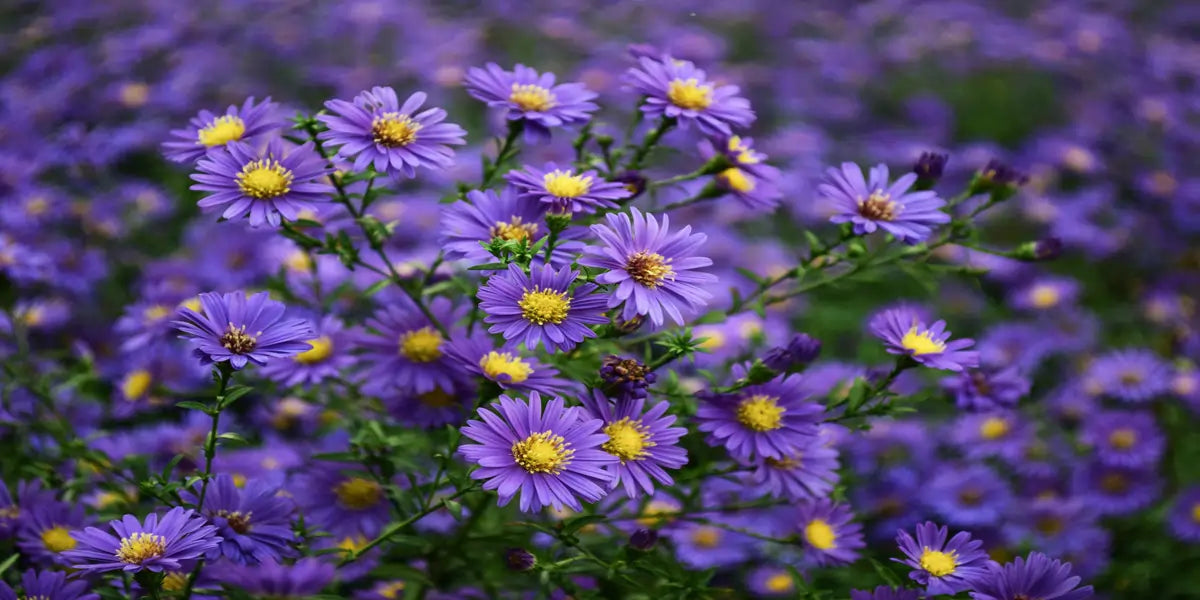Summer is a test for many plants, and hot weather can make plants weak. But we always have a way to make the summer garden colorful. A great suggestion is to plant perennials in your garden that bloom all summer. You need to sow seeds in the spring so that you can harvest a beautiful garden in the summer.
A list of perennials that bloom all summer long
Many perennials bloom throughout the summer. We have made a list for you and with this, you will get a better idea of what plants you want.
Lavender
Lavender is a beautiful flower that comes in four main types: English lavender, French lavender, Spanish lavender, and Portuguese lavender. Lavender has an enchanting aroma and is often used to make essential oils and fragrances. Lavender blooms in the summer and is often used in garden landscaping.
 (purple lavender)
(purple lavender)
Many gardeners like to use dried lavender to make sachets and hang them indoors. Some lavender can also be used to make a variety of salads, soups, desserts, and other dishes.
Echinacea
Echinacea is a perennial flower. Echinacea petals may be pink, purple, white, orange, red, or yellow. Butterflies and bees love Echinacea. Echinacea requires plenty of light to grow and blooms from June to August.

(Echinacea flower)
Echinacea is a favorite flower for many gardeners because Echinacea is low maintenance and drought tolerant. Some Echinacea varieties bloom for the second time in September.
Black-eyed Susan (Rudbeckia)
Rudbeckia is a typical perennial flower that blooms in summer. Rudbeckia's petals are gradient (yellow to orange) with a conical dark center. Rudbeckia flowers bloom from June to September.
 (Black-eyed Susan)
(Black-eyed Susan)
Rudbeckia is a common flower in many homes' backyards because of its beauty and low maintenance costs. Rudbeckia also helps resist deer and other animals.
Garden Phlox
Phlox is a common perennial flower in the garden that blooms from midsummer to autumn. Some phlox varieties bloom in early spring. Phlox blooms best in full sunlight and can adapt to hot climates.

(Phlox Flowers)
If you want to enjoy the beauty of phlox in the garden for a long time, you need to provide this flower with fertile and well-drained soil.
Rose verbena
Often added to flower beds, rose gardens, or hanging baskets, rose verbena is a beautiful hardy plant. Rose verbena blooms from late spring to late summer, and the petals are pink or purple.

(Rose verbena)
Rose verbena prefers sunny, well-drained soil. This flower does not like moist soil as well as shady environments. There is no need to water the rose verbena too much, it is enough to water it once a week, keeping the soil slightly moist.
Coreopsis
Coreopsis is a perfect plant for a garden. The plant is inexpensive to maintain, drought-tolerant, and has a long flowering period. There are more than 80 species of Coreopsis in bright colors, including red, orange, yellow, pink, and white, which look like daisies.

(Coreopsis)
Gardeners should plant Coreopsis in a sunny place with well-drained soil, and the plant needs at least 6 to 8 hours of direct light per day.
Perennial salvia
Perennial salvia is a common plant in summer gardens. This plant has a long flowering period and is loved by bees and butterflies, and can also help ward off deer and rabbits. Salvia can grow up to 18 inches to 5 feet tall and can also be grown inside containers.

(Perennial salvia)
Salvia needs plenty of sunlight (6 to 8 hours of sunlight per day) and well-drained soil. If you want to grow salvia. It is recommended to sow salvia seeds outdoors directly after the danger of spring frosts has passed.
Frogfruit( Phyla nodiflora)
Frogfruit is a flowering herb that is often grown as a ground cover plant. Frog fruits grow well in sunny environments. The flowers can last from April to October and are the perfect decoration for your garden.

(Frogfruit)
If you want to get more flowers, fertilize the frog fruit with a high-quality liquid fertilizer every spring.
Russian Sage
Russian Sage is a summer flowering plant. It has attractive tubular flowers in a charming blue color. Russian sage and lavender are similar in appearance.

(Russian Sage)
This plant has a long flowering period and can provide you with a fragrance throughout the summer. Hot, dry climatic conditions and well-drained soil are suitable for this perennial herbaceous plant.
Wild bergamot
Wild bergamot belongs to the mint family and is a perennial wildflower. It is a gorgeous native plant that attracts bees, butterflies, and birds. Wild bergamot can grow up to 4 inches long, bloom from early summer to midsummer, and have pink or purple flowers.

(Wild bergamot)
In addition to being a backyard flower, the plant can be used to make mosquito repellents or essential oils.
How to care for perennials?
Growing location
Usually, perennial flowers need plenty of sunlight. These plants need 6 to 8 hours of direct sunlight per day. If your garden doesn't get as much sunlight, you can choose perennials that grow healthily in the shade.
In winter, you should move plants to greenhouses and provide facilities such as heaters, grow lights, etc. for plants. Quictent 20' x 10' x 7' Heavy Duty Large Greenhouse has a sturdy frame with multiple vents on both sides. This product provides the best shelter for your plants.

(gardening tools)
If the ground freezes, you can move the plants to an elevated garden bed and cover the plants with compost. Quictent Silver Galvanized Raised Garden Bed is available in four sizes. This garden bed has a bottomless design and a weed barrier to protect your perennials.
Prepare the soil
Many perennials prefer soil with nutrients, well-drained, and good fertility. Generally, the soil pH should be 6.0 to 7.0. Adding organic matter to soil can improve fertility.

(soil in garden bed)
Start by determining the soil type in your garden and the drainage (wet or dry). Your soil condition can affect your choice of plants. If the soil type is not suitable for the plant you choose, likely, the plant will not grow healthily.
Apply fertilizer moderate
Fertilizers play an important role in plant growth. Many perennials do not require much fertilization. You need to understand the plant first and do a soil test to determine the amount of fertilizer the plant needs.
 (apply fertilizer)
(apply fertilizer)
Not all perennials require only a small amount of fertilizer, and some perennials require more nutrients. Lilies and phlox are examples which require more fertilizer.
Prevent weeds from harming plant
There is not a single garden without traces of weeds. You should always observe the plants and their surroundings and remove weeds as soon as they are spotted. Alternatively, you can use organic mulch, such as wood chips or pine needles, and change it regularly.
Deep watering
Check the soil moisture regularly to keep the soil moderately moist. Water the plants once a week, about an inch deep. Do not water too often, this can adversely affect plant growth.

(watering plants)
Deep watering can promote perennial plant rooting. If you want to reduce the watering frequency, you could add mulch.
Conclusion
Perennials that bloom throughout the summer add color to your garden. Investing in this type of flower allows you to enjoy the joy of plants for years in a row. How to prolong the life of perennials? Learn about the characteristics of plants and take good care of them! I wish you a beautiful summer garden!








